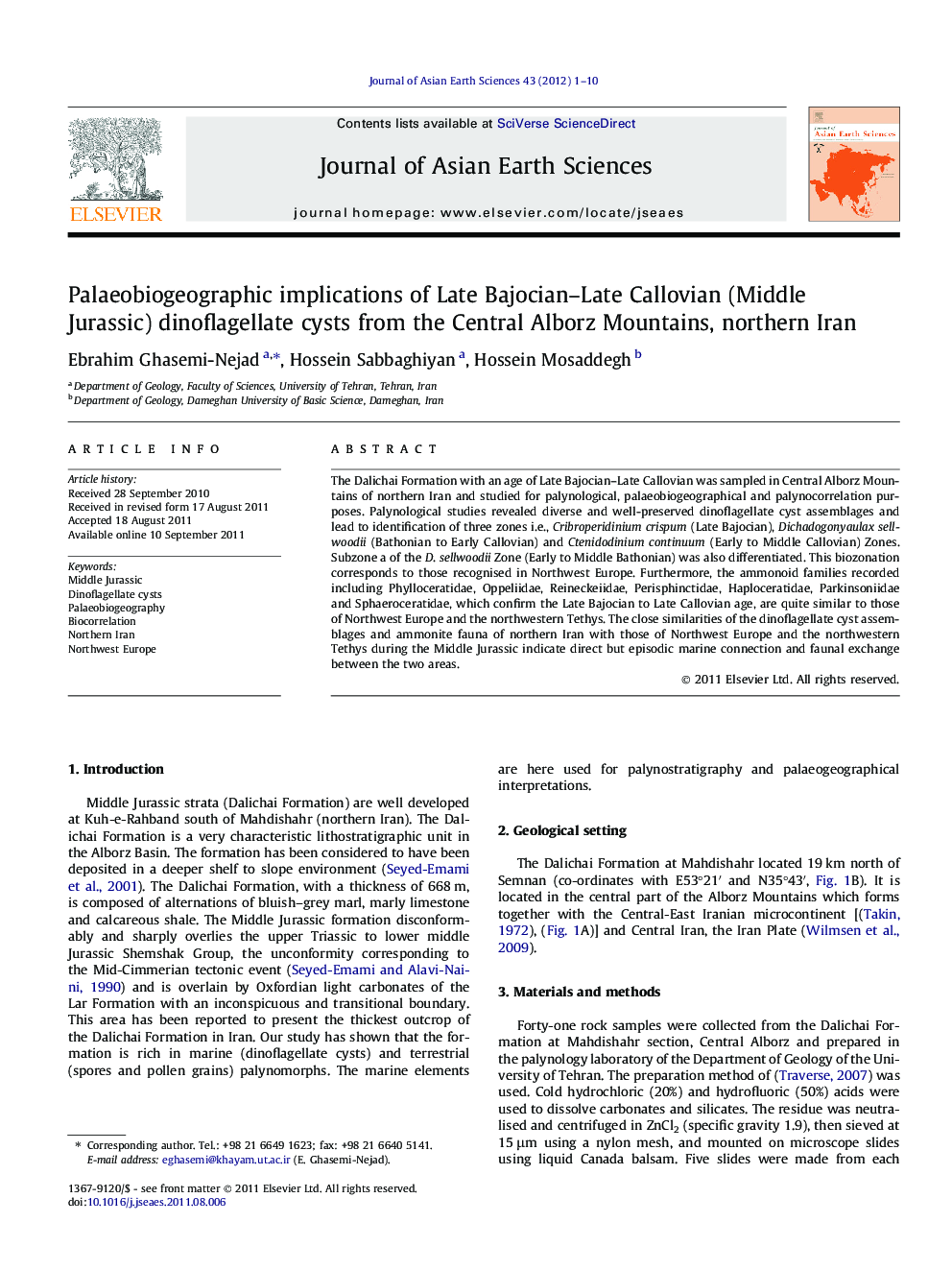| Article ID | Journal | Published Year | Pages | File Type |
|---|---|---|---|---|
| 4731618 | Journal of Asian Earth Sciences | 2012 | 10 Pages |
The Dalichai Formation with an age of Late Bajocian–Late Callovian was sampled in Central Alborz Mountains of northern Iran and studied for palynological, palaeobiogeographical and palynocorrelation purposes. Palynological studies revealed diverse and well-preserved dinoflagellate cyst assemblages and lead to identification of three zones i.e., Cribroperidiniumcrispum (Late Bajocian), Dichadogonyaulaxsellwoodii (Bathonian to Early Callovian) and Ctenidodiniumcontinuum (Early to Middle Callovian) Zones. Subzone a of the D. sellwoodii Zone (Early to Middle Bathonian) was also differentiated. This biozonation corresponds to those recognised in Northwest Europe. Furthermore, the ammonoid families recorded including Phylloceratidae, Oppeliidae, Reineckeiidae, Perisphinctidae, Haploceratidae, Parkinsoniidae and Sphaeroceratidae, which confirm the Late Bajocian to Late Callovian age, are quite similar to those of Northwest Europe and the northwestern Tethys. The close similarities of the dinoflagellate cyst assemblages and ammonite fauna of northern Iran with those of Northwest Europe and the northwestern Tethys during the Middle Jurassic indicate direct but episodic marine connection and faunal exchange between the two areas.
► Dinoflagellate cysts were recorded from the Middle Jurassic strata of northern Iran. ► Palynozones identical to those of Northwest Europe were differentiated. ► These include: C. crispum, D. sellwoodii and C. continuum zones. ► These show connections between northern Iran and Northwest Europe and the Tethys.
